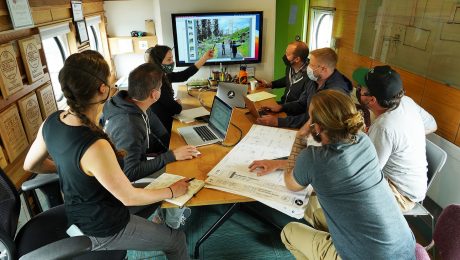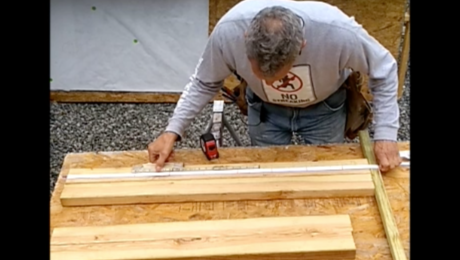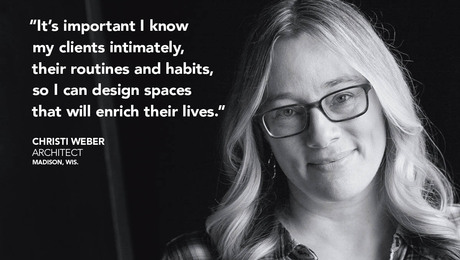Hiring Entry-Level Employees
Practical steps you can take to hire and develop entry-level workers and ensure long-term growth for your business, from fostering a supportive learning environment to creating clear career pathways.

If we’re going to solve the construction labor shortage, a lot more builders and remodelers need to be willing to hire people with little or no experience. Continually poaching higher-level experienced employees from your competitors may solve some short-term challenges, but in the long run it’s tantamount to an industry-wide Ponzi scheme, one that is already starting to crash.
If you’re the owner of a construction company in 2025, you have a responsibility to figure out how to hire entry-level people in a variety of capacities and give them their first work experience in our industry. Here is some guidance to help you tackle that challenge.
Make It Your Mission
Hiring inexperienced but promising individuals means playing the long game. You don’t hire someone with limited experience because you need a skilled carpenter now, or even a year from now. You hire someone with limited experience because workforce development is part of your mission and because you know that if you do it right, you’ll have some truly outstanding people on your team in three to five years or so—employees who are game-changers, with the skills, loyalty, and entrepreneurial drive potentially to take over your business when the right time comes.
Hire for Attitude and Aptitude
When I owned a design-build remodeling company, I looked for three things in a new employee: attitude, aptitude, and experience. Over time, I learned that the least critical of these was experience. Attitude has to do with showing up to work every day on time and being easy to get along with on the job site or in the office. Aptitude has to do with how quickly someone learns.
For instance, if one day they’re outside learning to install clapboards but it’s raining the next day and the crew moves inside to do trim, can they apply the skills they’ve learned to installing baseboard? Are they acquiring and developing skills in a tangible, measurable way, week to week and month to month?
Experience runs both ways. It can mean a new employee is productive out of the gate, but it can also mean a fair amount of time is required to unteach some bad habits. I think of the difference between hiring experienced people and hiring inexperienced people with good attitude and aptitude as the difference between laying sod and planting seed; the latter yields deeper roots and greater resilience.
Be a Good Employer
You’ll only undermine our industry’s workforce-development efforts if entry-level people have a lousy experience working for you. Before deciding to hire, think hard about how you’ll treat your workers. Hire employees as employees (not as 1099 subcontractors), and meet your legal obligations by paying FICA taxes, unemployment insurance, and workers’ compensation.
Offer benefits like vacation and holiday pay, education, tool allowances, 401k contributions, and health care reimbursement. Have clear roles within your organization and documented responsibilities and pay ranges for each role that add up to a career pathway.
Finally, set up projects for success by establishing realistic schedules and budgets, by having clear, shared expectations, and by working with clients and subs who understand and willingly follow ground rules. This allows your employees to do their best work rather than spend their workdays fighting fires.
Vocational teachers, career trainers, and other “connectors”—people who will be essential partners in your efforts to hire promising entry-level individuals—are usually very protective of their students. They want to be sure that they’re introducing students or trainees to responsible employers who offer real career pathways. Having these practices and policies in place will help you send the message that they can take you seriously as a prospective employer.
Cultivate a Supportive Learning Environment
You don’t want a new hire with limited experience to feel like a burden or nuisance to the rest of the team. Productivity might take a hit, but view it as an investment rather than a cost. Explain to the client what you’re doing, and get them on board. Identify the gifted teachers on your crew over time—perhaps designate one of them as the “carpentry teacher,” creating a job description (with a pay bump) for that role.
You can also stock an “apprentice toolbox” with high-quality hand tools to ensure the new hire is equipped to contribute. If transportation is an issue, consider temporarily helping with rides while setting up a plan for the hire to get a driver’s license and car within a specific time frame.
Offer ongoing safety training (as required by OSHA) to prevent avoidable injuries, and make accommodations for language access if necessary. Check in with new hires at 30 and 90 days to provide feedback and gather input on how you can better support them. All of this will create an environment where the new employee feels valued, even if they’re inexperienced.
Have a Defined Structure
Not all entry-level positions are the same. You can focus on just one type of role and hold off on the others until you’re ready to expand your entry-level opportunities. Or consider having multiple job descriptions for these foundational positions to appeal to different candidates. Here are some possibilities.
Interns
An internship typically is a time-limited commitment, perhaps three to 12 months, and often part of a high school or college training program. I think of an intern as someone with little prior work experience, possibly someone still in a career-discovery phase. You’re taking more of a gamble but managing the risk by limiting the duration of the work relationship.
The intern gains valuable work experience and an important additional line in what might be a pretty short resume. You and your crew gain, at the very least, practice at working with entry-level employees, and possibly much more: someone so good that you’re excited to offer them a permanent job.
Apprentices
An apprenticeship is a full-time position and the first step on the carpentry-career pathway. Unlike interns, apprentices are long-term hires, people you are making a commitment to for the long haul and to whom you are explicitly or implicitly offering ongoing opportunities for career advancement. Apprentices, being higher-stakes hires than interns, should likely be subject to different hiring criteria, and undergo more frequent evaluations during their first few months.
Whereas most job descriptions in your company probably focus on responsibilities, the apprentice job description would likely emphasize carpentry skills, and provide a clear and objective way to monitor and measure the acquisition of those skills (for instance, “Given rough opening dimensions and height of bottom of header, can lay out and frame a window opening within 1/8-in. tolerances”).
Laborers
Laborers fill full- or part-time roles. Laborers, for any number of reasons, generally don’t aspire to become skilled carpenters but bring a great work ethic and attitude. By offering laborer positions, you can hire individuals who may not otherwise be a good fit for traditional career tracks and offer them purposeful work of great benefit to your company. You may find that someone you hired as a laborer has more carpentry aptitude than you or they realized, and they can be reassigned to an apprenticeship.
Career Changers
Career changers are individuals transitioning into the construction field from other industries. Career changers bring maturity and transferable skills like management or communication that may compensate for their lack of technical expertise. While career changers may start as interns, apprentices, or laborers, the right job description for a career changer takes full advantage of their greater maturity and acknowledges that in small construction companies, we need crews to have both well-developed technical skills and well-developed people skills.
In a small residential construction company, if an apprentice isn’t ready to move on to an assistant carpenter or carpenter position within two years, they may not be a good fit and should be reassigned or let go. A small construction company, for example, may hire four or five apprentices every decade and find that one or two stick around for the long haul and are well worth the investment. As your employees progress, having a clear structure for advancement beyond entry-level is crucial. These roles include assistant carpenters, carpenters, and lead carpenters, each requiring more technical skills and responsibility.
Offer Daily Support
Regardless of the job title or description, make expectations clear regarding how many hours per day, days per week, and weeks per year you expect your new hire to work. Define whom they report to and document it in your organizational chart and job descriptions, and then work with that person to onboard and support your new hire.
Spend five to 10 minutes orienting the new hire at the beginning of each day: Here’s what we’re working on; here’s how the job site is organized for this phase of construction; here are the goals for the day; here’s how we plan to involve you. Then take a couple of minutes to check in at the end of the day and provide candid feedback while it’s fresh in your mind.
Regardless of the anticipated tasks for the day, try to maintain a running list of about eight hours’ worth of tasks that the individual can do with minimal supervision. This will take some pressure off the rest of the crew if the day doesn’t go as planned. And as you engage in these activities, remember that this initiative needs to be mission-driven, not solely needs-driven. If you start with the mission, the needs will most likely take care of themselves over time.
— Paul Eldrenkamp is a business consultant at HELM Construction Solutions, where he works with contractors and architects throughout North America to help their businesses thrive.
RELATED STORIES






























View Comments
Active Interest Media,
If you want to undercut the messages of your authors and signal a decline in product quality to your reader base, keep putting stock photos in your articles.